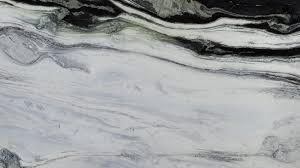Your Window to Inspiration: Seamlessly Browse Tumblr!
Sediment - Blog Posts

“The erosive work of streams.” Elementary physiography. 1910.
Andy Goldsworthy
https://doorofperception.com/2016/03/andy-goldsworthy-working-with-time/
Goldsworthy made work with snowballs, ice and natural materials, the melting process on watercolour paper echoing the processes in the natural world.
The drawings in this exhibition are made with snowballs, ice and natural materials from different locations: Borrowdale graphite, Borrowdale slate, Derwent water, Drumlanrig clay, Pit clay, and earth from the source of the Scaur River, Penport. The process of the snowballs melting on watercolour paper and forming the drawings echoes processes in the natural world: erosion, sedimentation, ice and flow. The visual structure and colour qualities thus produced are extraordinary.
The Ice and Snow Drawings have two main sources. The first Arctic Snowballs of 1989 resulted from an experience Goldsworthy had while out hunting with his Inuit guide Luti and his son. Coming across a breathing hole in the ice pack, Luti circled around at a distance, moving towards the hole, while his son stood ready with his gun in anticipation of the rising seal.
Dark blood dripped and trailed in the snow as the sledge moved off, carrying carcass and hunters. The seal was caught by the hunter’s instinct and knowledge of its survival habits.
The second source for the Snowball Drawings was an experience made by Goldsworthy following an exhibition at Glasgow’s Tramway. His large snowballs, which gradually melted during the course of the show, left an afterimage caused by the ‘impurities’ in the snowball.
On another occasion in the Arctic, Goldsworthy and his guides came across a polar bear’s tracks in the snow. Running parallel to this were the tracks of a mechanised skidou. Luti’s comment was simply: “dead bear.”
This experience of immersion in the natural world continues with the snowball drawings, but other questions arise. In the drawing with graphite from Borrowdale – one of the main sources for this material – there is a dual process: on the one hand natural, on the other with the artist’s participation. Who, or what, is making the drawing?
The oeuvre of artist Andy Goldsworthy utilises ‘found’ natural objects like leaves, rocks, ice and sticks to create captivating, often ephemeral interventions into the natural landscape that remind us of the power of natural beauty and the continuously changing seasons. Architectural writer Eva Menuhin discusses some of the traits in his work, which has recently become more monolithic yet is still concerned with movement, natural materiality and time, as seen in his work in progress ‘Hanging Stones’.
Issy Wilson

https://www.instagram.com/iwilson.art/?hl=en
Issy Wilson is a London-based artist originally from Chicago. Her practice is deeply rooted in the natural world, with a focus on drawing, painting, textiles, and research. She gathers inspiration by observing her surroundings from the seemingly mundane to the extraordinary: noticing water stains on pavement and moss in the cracks of city bricks to the breathtaking views of the national parks and ancient forests.
Her work explores the structures of roots, trees, mycelium, lichen, and mosses, examining how they mirror blood vessels, neurons, rivers, and mountains in their search to form strong organic connections. Her art studio has become an ecosystem of its own, with pieces evolving symbiotically.
Materials: ink, tea, emulsion, cheese cloth, acrylic, pea, canvas, pastels.

Ecdysis
ink, tea, and emulsion on canvas, 186x300cm, 2024

Ecdysis detail

Limestone I
ink and emulsion on canvas, 150x250cm, 2024

Limestone II,
ink and emulsion on canvas, 150x150cm, 2024
Marbling
The quality of a surface that has streaks of color, like marble

The patterns are formed by first floating the colors on the surface of a liquid, and then laying the paper or fabric onto the colors to absorb them.
looking through ancient volumes full of arcane recipes for mixing such exotic ingredients as Irish moss seaweed, spirits of green soap, and distilled bile from the gall bladder of an ox.
They were used for decorative purposes, and also as a background for official documents and signatures, to prevent erasure and forgery.
The traditional marbling inks were just not durable enough to stand up to washing. Now, though, fine marbling can be done just as easily on cloth as on paper with these new paints, and modern colors are much more vivid and brilliant and long-lasting than ever in the past.
Stone Marble: Gives the effect of real marble. Stone marbles are the simplest patterns, but they often take longer to make than the more complex combed patterns, because so many thousands of tiny droplets of color must be applied.

Marble
Marble is metamorphosed limestone, quartzite is metamorphosed sandstone, and gneiss, another common metamorphic rock, sometimes begins as granite.


Metamorphic rocks are sedimentary or igneous rocks that have been transformed by pressure, heat, or the intrusion of fluids. The heat may come from nearby magma or hot water intruding via hot springs. It can also come from subduction, when tectonic forces draw rocks deep beneath the Earth's surface.

Dorothea Rockburne, "D" Study for Scalar, (chipboard, crude oil, paper and nails), 1970 [Craig Starr Gallery, New York, NY. © Dorothea Rockburne / ARS, New York]
Exhibition: Dorothea Rockburne: Works 1967-1972, September 7 – October 20, 2012
